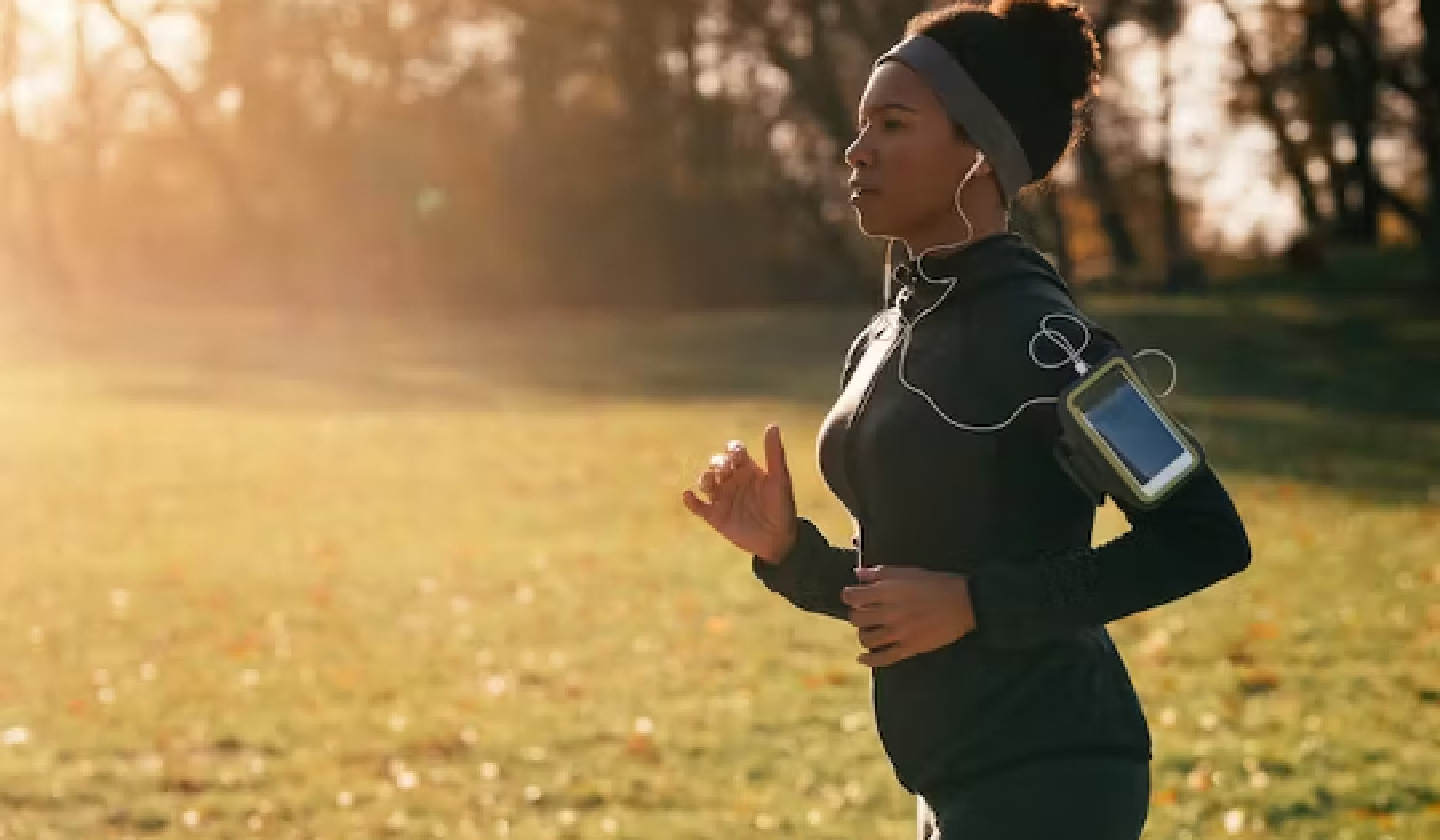
Image by Jordy Meow
Aristotle; To be is to do.
Voltaire: To do is to be.
Frank Sinatra: Doobedoobedoobedoo.
Nathaniel Hawthorne once wrote, "Happiness is a butterfly which, when pursued, is always just beyond your grasp, but which, if you will sit down quietly, may alight upon you."
Beautiful words.
But if an Ayurvedic healer were to substitute "health" for "happiness" here, I am certain he would put it like this: "Health is NOT a butterfly that will come and sit on your shoulder quietly. But give it a good chase, and you will have it in your grasp."
This, to me, is the sum and substance of Ayurveda. It sees good health not as an elusive lifelong quest, but as a duty you have to yourself every living moment.
An Unusual Prescription
Vaidya Sharma, an Ayurvedic physician, gave me an unusual prescription. Let's look at it with some of the words in bold print:
• Give yourself a warm sesame-oil massage before your daily bath.
• Drink a cup of warm water every half hour.
• Make generous use of coarsely pounded coriander seeds in cooking.
• Eat a spoonful of rose-petal preserve at noon.
• Practice twenty minutes of quiet reflection every morning and evening.
See? Each of the words highlighted is a verb.
That is why, although Ayurveda is rightly listed in the dictionary as a noun, I call it a verb. And that is why this book will tell you not only what Ayurveda can do for you, but how you can do Ayurveda.
So what exactly does the practice of Ayurveda ask you to do? Perform your dharma (religious duty), pursue artha (wealth and security), seek kama (pleasure), and strive for moksha (pursuit of liberation from earthly miseries) — the four efforts toward happiness as described in Hindu philosophy? Or reset your consciousness in order to drink from the fountain of eternal youth? Or contemplate the deeper reality of life while standing on your head?
Happily, the answer is "None of the above."
"Doing" Ayurveda does not require conquering complicated Sanskrit terms, memorizing mantras, mastering body contortions, or struggling with religious beliefs. It requires nothing except that you commit your time and energy to your own supreme well-being. What's more, it asks that you do this in as relaxed a manner as you like, step by baby step — a simple, friendly, and — yes — fun way to be 100 percent healthy!
Making Healthy Choices
In concrete terms, to "do" Ayurveda is to make healthy choices in daily life. These choices can be as simple as choosing fresh fruit over a donut, choosing a health magazine over a horror novel, choosing to sleep instead of watching a late-night film. I promise this is what Ayurveda is really about, even though you might have heard or read differently.
Because Ayurveda is about lifestyle, it follows that the most important element in following its principles is... you! From this moment onward, think of physicians as mere guides in your journey toward perfect health. Resolve to slowly wean yourself from your dependence on them. Revel in the heady knowledge that you can go the distance alone. Respect your own potential to heal and be whole, such self-respect is the essence of Ayurveda.
The Ayurvedic route to great health involves two simple steps:
1. Doing less;
2. Being more.
Before you set out toward your destination, keep one thing in mind: this is going to be a journey with a difference.
Here, one step doesn't follow the other; you take both simultaneously.
Doing Less, Being More
Picture this: You have just emerged from a meeting with the boss, and for the next two hours you worry about the furrow on her brow, the grimace at the corner of her lips, the tone of her voice. Determined to win her smile by the end of the day, you immerse yourself in a sea of files. In doing this, you ignore your dry throat, your stale breath, your aching eyes, your strained neck, your throbbing wrist, your parched skin, and your stretched nerves. Later, at home, it's the spouse, kids, and dogs waiting for you to give them time, attention, and dinner.
All the time, in every way possible, other people are deciding the course of our actions. We are listening to them so hard, trying so desperately to please them, that we can no longer listen to ourselves. In "doing" all the time, we forget to just "be."
Ironically, over time, the more we "do," the less we achieve. All that effort takes its toll on our physical, mental, and emotional health. It disconnects us from our deeper needs, leaving us empty and dull. In rural India we have a saying: "If you keep drawing from it, even the deepest well will dry up one day." That is just what eventually happens; we dry up.
Now imagine a different, more pleasant scenario. You come to work determined to win your own smile at the end of the day. That is, you remember to log off your computer, take a short walk, drink a glass of water, and moisturize your skin every thirty minutes. Instead of "grabbing" an indifferent lunch, you bring fresh fruit, yogurt, and a whole-grain sandwich from home. You don't take coffee breaks, you take exercise breaks.
Just one day of treating yourself well is sure to set off a chain of happy events. You return to your desk humming after your short break, and suddenly the solution to a niggling little problem pops into your head. Even if nothing so dramatic happens, you find yourself being nice to your coworkers. Instead of the usual post-lunch slump, you feel a post-lunch kick. Back home, you want to make a good dinner instead of warming yesterday's meal.
In treating yourself well for a day, you achieved both doing less and being more. In the literal sense, you still "did" things; you did not sit idle. But what you did was gloriously different from what you had been doing for so long. You let yourself slow down instead of driving yourself hard. You did not misuse your body and you did not pressure your mind. You began the process of healing.
You lived Ayurveda today.
Being More, Bite By Healthful Bite
Surprising, isn't it, that a system of healing so ancient should seem so completely commonsense and user-friendly? It is, it is! What's more, the Ayurvedic love of harmony also extends to how you progress. The vaidya will always tell you that trying too hard to change old habits is in itself an enemy of harmony; it creates stress, and stress is the enemy of health. Let me tell you an interesting Indian folk tale that will bring home this point very nicely.
Before setting out to till the soil in her fields, a village woman called to her daughter: "Listen carefully, child. I shall return in the afternoon, so you can go out and play with your friends until then. But before you leave, I want you to sweep and mop the floors, make the beds, prepare bread, cook the lentils, clean the dishes, milk the cows, and fetch water from the well."
Overwhelmed by this torrent of instructions, the little girl could bring herself to do nothing but sit and weep. Just then, her father emerged from his morning prayer. When he heard the reason for his daughter's tears, he said, "I wish I could help you with your chores, little one. But I have to clean out the pigsty and chop a heap of wood. Don't worry, though. I'll make your job easy. Here: take this broom and start by sweeping the floor."
The girl set to work. When she had swept the floor, her father handed her the mop. After she was through mopping, he told her to go make the beds. And so on, step-by-step, until all her work was done before lunchtime.
"There, was that so hard?" inquired the father, his eyes twinkling. The girl shook her head happily and went out to play with her friends.
The moral of the story: Attack your goal of great health in bite-sized chunks, and you'll get there without over stepping your comfort zone. Don't kill yourself to live better!
Awaken The Doctor Within You
Slowly, your new habit of doing less and being more will yield an excellent side benefit: you will be able to hear yourself better. (The great thing about Ayurveda is that its treatments always yield side benefits, not side effects.)
I will illustrate this notion of "hearing yourself better" by recounting an interesting incident. We were driving from Colorado to California on a family vacation, and I was quizzing my son on world geography. The FM radio station played softly in the background. Suddenly, my husband switched off the radio and said, "Shhh! I can hear a sound in the car."
"What sound?" I asked, after straining to hear it. All I could hear was the steady purr of the engine.
"There is a "clink" sound somewhere — and it comes about every thirty seconds," he insisted. I listened again — and couldn't catch any clinking. "Much ado about nothing." I muttered. But by this time, my husband was already pulling over.
Minutes later, he had his finger on the problem. "See this? The bearings on this wheel have worn off," he pointed out triumphantly. "We need to have them replaced as soon as we hit the next big town."
See what I'm getting at? My husband could catch the faint "clink" because he knew the normal sounds of his car intimately. Just like that, you can catch the off-key signals of your body when you learn to be in tune with it. As a result, if and when a tune-up is needed, you will not need to wait for a doctor to diagnose where the discordant note is coming from.
Speaking of doctors, another occasion comes to mind. Under attack from a particularly bad flu while reporting on television for the general election in India, I succumbed to the urge for quick relief and went to the nearest doctor I could find. He asked me to describe my symptoms, and I said, "My nose is completely blocked. My eyebrows and cheeks hurt. I think I have maxillofacial sinusitis."
The doctor couldn't hide his astonishment. Then he pulled himself together and said, "Don't talk like a book." He proceeded to make the same diagnosis in pointedly medical terms, and wrote a prescription for some strong antibiotics (which blocked my nose even more thoroughly, but that is another story).
At first it struck me as strange that the doctor reacted negatively to my self-diagnosis. It was as if he found it absurd that a layperson should know the term "maxillofacial sinusitis." But thinking back, I realize that the doctor's attitude was no mystery. Doctors are conditioned to see most of their patients as clueless people desperately seeking remedies. And they are justified in that assumption, because that is exactly what happens in most cases; we don't understand our maladies because we don't even try.
Try — and you will know. According to Ayurvedic principles, that's the way nature intended it.
To those of us who have been brought up to trust no one but the doctor, the pharmacist, and the medicines — and that covers most of us, I guess — this new idea of consulting ourselves can seem unrealistic and unconvincing at first. Therefore, I suggest that we examine this Ayurvedic belief system from the root upward.
The Importance Of Action
Ayurvedic healers believe that you are not a mortal package of bone, muscle, and blood, but a part of the universe itself. They are convinced that you can be as rhythmic as the seasons, as powerful as any star, as ageless as time — because they believe that you are made up of the same dynamic elements that compose the cosmos. That is why they respect and trust you deeply.
Thousands of years ago, when Ayurveda was in its formative years, its sages had no microscopes, scalpels, or medical texts. The earth was their laboratory, and the wondrous universe their subject. While today it is nearly impossible for us to think of human biology without using terms like "organs," "tissues," and "genes," back then none of this vocabulary existed. Therefore, the sages slowly made their own connections and noted their own findings — using no other reference than life as they saw it.
I wonder when and how the idea first emerged that human beings were one with their universe, but emerge it did. Sometime during those long-gone centuries, the sages made the fascinating observation that the fire that burned in volcanoes also burned inside the human belly; the earth that bore life was also a constituent element of human physiology; and the boundless space all around was a vital part of the human body and mind.
From these basic observations flowed a series of conclusions: If human beings were indeed compact forms of the universe itself, then all the laws that governed the universe also governed them. This meant that the same unseen natural intelligence that controlled the rhythm of the seasons also regulated human digestion, respiration, circulation, and reproduction. And the intelligence that told a seed to send forth a giant tree also taught a broken bone to heal itself.
And yet, in spite of this supreme intelligence, disease struck. Men and women fell violently ill — or simply aged and died. The sages never stopped questioning why. Then they unlocked another important secret: the "intelligence" we possess has a "flow" that can be interrupted. They called this flow prana, or vital life force.
Impurities, imbalances, immoderation — one by one the enemies of flow emerged. What the sages now needed was to find the friend who could restore the flow of natural intelligence, thus defeating disease. Again and again, their attention was drawn to one and only one person: the sufferer himself. This was the person, Ayurvedic healers reasoned, who played host to both the intelligence and the interruption of flow.
Yes! The sick knew exactly where their discomfort lay. They alone could tell what made them feel better.
Who better qualified than the suffering, the healers reasoned, to be the friends they were searching for?
In other words, the answer to each human disease and disorder lay within the individual human being.
When Vaidya Divakar Sharma first explained this theory to me, I was skeptical. After all, I argued, how can I be a better doctor to myself than an actual, medical degree-holding doctor who knows the human body inside and out? The vaidya calmly pointed out that a doctor does know the human body better, but he can never know my body better than me.
That made perfect sense. And, to bring this chapter full circle, it convinces me that Ayurveda is, above everything else, a verb.
Reprinted with permission of the publisher, New World Library.
©2003. www.newworldlibrary.com
Article Source
Essential Ayurveda: What It Is and What It Can Do for You
by Shubhra Krishan.
 Ayurveda is perhaps one of the most popular "holistic" health practices in the United States. Based on 5,000 years of practice and observation and popularized in part in the works of Deepak Chopra, "ayurveda" translates into "the science of life" and takes into account the spiritual, mental, and physcial aspects of health. After a brief definition of ayurveda and the basic elements, ESSENTIAL AYURVEDA outlines the practical steps any person can take to become healthier.
Ayurveda is perhaps one of the most popular "holistic" health practices in the United States. Based on 5,000 years of practice and observation and popularized in part in the works of Deepak Chopra, "ayurveda" translates into "the science of life" and takes into account the spiritual, mental, and physcial aspects of health. After a brief definition of ayurveda and the basic elements, ESSENTIAL AYURVEDA outlines the practical steps any person can take to become healthier.
The book is set up with simple suggestions to get readers started on the path to good health.
Info/Order this book. Also available as a Kindle edition.
About the Author
 Shubhra Krishan had been a news correspondent for India's biggest network and an editor at Cosmopolitan (India) before moving to the United States with her family. Her articles have appeared in many national magazines. Shubhra works in the marketing department of Maharishi Ayurveda, a company in Colorado Springs that produces and markets ayurvedic products, including their popular Raja’s Cup (a coffee substitute) and teaches yoga on the Yoga International website. Visit her blog at https://thepositivetype.wordpress.com/
Shubhra Krishan had been a news correspondent for India's biggest network and an editor at Cosmopolitan (India) before moving to the United States with her family. Her articles have appeared in many national magazines. Shubhra works in the marketing department of Maharishi Ayurveda, a company in Colorado Springs that produces and markets ayurvedic products, including their popular Raja’s Cup (a coffee substitute) and teaches yoga on the Yoga International website. Visit her blog at https://thepositivetype.wordpress.com/

























